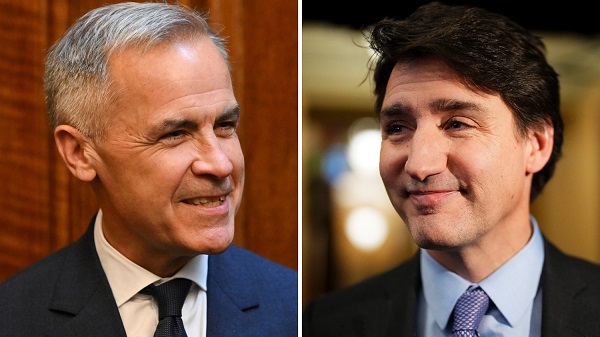Alberta
Potential investment manager for an Alberta pension plan—here are the facts

From the Fraser Institute
As discussions around Alberta’s potential withdrawal from the Canada Pension Plan (CPP) continue, commentators have bombarded Albertans (and Canadians more generally) with sometimes misleading rhetoric, which can undermine the public’s understanding of this key issue. Albertans—and Canadians broadly—need facts to make well-informed decisions.
One key issue has been the potential investment manager for an Alberta pension plan. Specifically, commentators have implied that by leaving the CPP, Albertans retirement funds would no longer be managed by the Canada Pension Plan Investment Board (CPPIB) but rather by the Alberta Investment Management Corporation (AIMCo), which manages several public funds and pensions in the province.
This is not necessarily the case. The province has the option to retain the CPPIB as its investment manager, contract with AIMCo, create a new provider, or contract with the private sector. Put simply, an independent Albertan pension plan has options other than contracting with AIMCo.
But for argument’s sake, let’s assume AIMCo was chosen as the investment manager for an Alberta pension plan. There’s quite a bit of confusion regarding AIMCo that should be clarified. Perhaps most commonly, critics of AIMCo emphasize that the CPPIB has averaged 10 per cent annual returns over the past decade, higher than AIMCo’s 7.2 per cent.
While true, the CPPIB rate of return is distinct from the rate of return earned by contributors to the CPP. Put differently, an individual’s rate of return is not the same as the fund’s rate of return because of the way the CPP was originally designed. Some of the commentary written on this issue has implied that the lower rates of return at AIMCo would influence the benefits received by Alberta retirees. In fact, the retirement benefits Canadians receive from the CPP, and from a comparable Alberta pension plan, are based on several unrelated factors including how many years they’ve worked, their annual contributions and the age they retire. This is key since the CPP and a potential Alberta pension plan are largely based on current workers paying for current retirees, or what’s known as a pay-as-you-go system. Estimates suggest Canadian workers born in 1993 or later can expect a real rate of return of just 2.5 per cent from the CPP.
Given the pay-as-you-go nature of the plan, the key for the CPP, and one assumes for an independent Alberta pension plan, is that the fund earns a rate of return that allows for sustainable payments to retirees over time. The current required rate of return for the CPPIB is 6.0 per cent, which both it and AIMCo exceed.
Moreover, AIMCo, unlike the CPPIB, is constrained by the investment policies of each individual pension fund that it manages. Indeed, unlike the CPPIB, AIMCo is responsible for managing the funds of numerous pension plans, each with their own investment objectives, risk tolerances and asset mixes AIMCo must follow.
For instance, the Management Employees Pension Plan, one of AIMCo’s largest pension funds, requires that 20 per cent to 45 per cent of the market value of the plan’s assets be invested in “inflation sensitive” investments, which include real estate, renewable resources and other assets that may have lower returns compared to alternatives such as investments in private equity. These constraints can limit AIMCo’s overall rate of return, while the CPPIB, unencumbered by the investment policies of other pension funds, has the flexibility to invest according to its core objective, which is to maximize returns adjusted for risk. Put differently, Albertans could grant AIMCo the same flexibility—it all depends on the investment policy implemented if an Alberta pension plan were created.
Finally, opponents also argue that the CPPIB fund’s size (more than $575 billion) makes it superior to any potential provincial fund. Yet the evidence suggests that despite its size, the CPP is not a low-cost pension plan. In fact, according to an analysis by Philip Cross, former chief analyst at Statistics Canada, the CPP’s cost at 1.07 per cent of assets was higher than the other analyzed pension plans, which ranged from 0.34 per cent to 1.02 per cent. And the CPP’s costs have skyrocketed from $4 million in 2000 to 4.4. billion annually, largely due to an increase in staff and compensation. For perspective, the CPPIB had only five employees in 2000; by 2020 it employed nearly 2,000 people. And critically, these changes have not increased the fund’s net returns.
Ultimately, it will be up to Albertans to decide if they want to opt out of the CPP for an Alberta pension plan, but to make that decision, they must be armed with facts. That includes clarifying some misunderstanding on two potential investment managers—CPPIB and AIMCo.
Alberta
Alberta government’s plan will improve access to MRIs and CT scans

From the Fraser Institute
By Nadeem Esmail and Tegan Hill
The Smith government may soon allow Albertans to privately purchase diagnostic screening and testing services, prompting familiar cries from defenders of the status quo. But in reality, this change, which the government plans to propose in the legislature in the coming months, would simply give Albertans an option already available to patients in every other developed country with universal health care.
It’s important for Albertans and indeed all Canadians to understand the unique nature of our health-care system. In every one of the 30 other developed countries with universal health care, patients are free to seek care on their own terms with their own resources when the universal system is unwilling or unable to satisfy their needs. Whether to access care with shorter wait times and a more rapid return to full health, to access more personalized services or meet a personal health need, or to access new advances in medical technology. But not in Canada.
That prohibition has not served Albertans well. Despite being one of the highest-spending provinces in one of the most expensive universal health-care systems in the developed world, Albertans endure some of the longest wait times for health care and some of the worst availability of advanced diagnostic and medical technologies including MRI machines and CT scanners.
Introducing new medical technologies is a costly endeavour, which requires money and the actual equipment, but also the proficiency, knowledge and expertise to use it properly. By allowing Albertans to privately purchase diagnostic screening and testing services, the Smith government would encourage private providers to make these technologies available and develop the requisite knowledge.
Obviously, these new providers would improve access to these services for all Alberta patients—first for those willing to pay for them, and then for patients in the public system. In other words, adding providers to the health-care system expands the supply of these services, which will reduce wait times for everyone, not just those using private clinics. And relief can’t come soon enough. In Alberta, in 2024 the median wait time for a CT scan was 12 weeks and 24 weeks for an MRI.
Greater access and shorter wait times will also benefit Albertans concerned about their future health or preventative care. When these Albertans can quickly access a private provider, their appointments may lead to the early discovery of medical problems. Early detection can improve health outcomes and reduce the amount of public health-care resources these Albertans may ultimately use in the future. And that means more resources available for all other patients, to the benefit of all Albertans including those unable to access the private option.
Opponents of this approach argue that it’s a move towards two-tier health care, which will drain resources from the public system, or that this is “American-style” health care. But these arguments ignore that private alternatives benefit all patients in universal health-care systems in the rest of the developed world. For example, Switzerland, Germany, the Netherlands and Australia all have higher-performing universal systems that provide more timely care because of—not despite—the private options available to patients.
In reality, the Smith government’s plan to allow Albertans to privately purchase diagnostic screening and testing services is a small step in the right direction to reduce wait times and improve health-care access in the province. In fact, the proposal doesn’t go far enough—the government should allow Albertans to purchase physician appointments and surgeries privately, too. Hopefully the Smith government continues to reform the province’s health-care system, despite ill-informed objections, with all patients in mind.
Alberta
Canada’s heavy oil finds new fans as global demand rises

From the Canadian Energy Centre
By Will Gibson
“The refining industry wants heavy oil. We are actually in a shortage of heavy oil globally right now, and you can see that in the prices”
Once priced at a steep discount to its lighter, sweeter counterparts, Canadian oil has earned growing admiration—and market share—among new customers in Asia.
Canada’s oil exports are primarily “heavy” oil from the Alberta oil sands, compared to oil from more conventional “light” plays like the Permian Basin in the U.S.
One way to think of it is that heavy oil is thick and does not flow easily, while light oil is thin and flows freely, like fudge compared to apple juice.
“The refining industry wants heavy oil. We are actually in a shortage of heavy oil globally right now, and you can see that in the prices,” said Susan Bell, senior vice-president of downstream research with Rystad Energy.
A narrowing price gap
Alberta’s heavy oil producers generally receive a lower price than light oil producers, partly a result of different crude quality but mainly because of the cost of transportation, according to S&P Global.
The “differential” between Western Canadian Select (WCS) and West Texas Intermediate (WTI) blew out to nearly US$50 per barrel in 2018 because of pipeline bottlenecks, forcing Alberta to step in and cut production.
So far this year, the differential has narrowed to as little as US$10 per barrel, averaging around US$12, according to GLJ Petroleum Consultants.
“The differential between WCS and WTI is the narrowest I’ve seen in three decades working in the industry,” Bell said.
Trans Mountain Expansion opens the door to Asia

Oil tanker docked at the Westridge Marine Terminal in Burnaby, B.C. Photo courtesy Trans Mountain Corporation
The price boost is thanks to the Trans Mountain expansion, which opened a new gateway to Asia in May 2024 by nearly tripling the pipeline’s capacity.
This helps fill the supply void left by other major regions that export heavy oil – Venezuela and Mexico – where production is declining or unsteady.
Canadian oil exports outside the United States reached a record 525,000 barrels per day in July 2025, the latest month of data available from the Canada Energy Regulator.
China leads Asian buyers since the expansion went into service, along with Japan, Brunei and Singapore, Bloomberg reports. 
Asian refineries see opportunity in heavy oil
“What we are seeing now is a lot of refineries in the Asian market have been exposed long enough to WCS and now are comfortable with taking on regular shipments,” Bell said.
Kevin Birn, chief analyst for Canadian oil markets at S&P Global, said rising demand for heavier crude in Asia comes from refineries expanding capacity to process it and capture more value from lower-cost feedstocks.
“They’ve invested in capital improvements on the front end to convert heavier oils into more valuable refined products,” said Birn, who also heads S&P’s Center of Emissions Excellence.
Refiners in the U.S. Gulf Coast and Midwest made similar investments over the past 40 years to capitalize on supply from Latin America and the oil sands, he said.
While oil sands output has grown, supplies from Latin America have declined.
Mexico’s state oil company, Pemex, reports it produced roughly 1.6 million barrels per day in the second quarter of 2025, a steep drop from 2.3 million in 2015 and 2.6 million in 2010.
Meanwhile, Venezuela’s oil production, which was nearly 2.9 million barrels per day in 2010, was just 965,000 barrels per day this September, according to OPEC.
The case for more Canadian pipelines

Worker at an oil sands SAGD processing facility in northern Alberta. Photo courtesy Strathcona Resources
“The growth in heavy demand, and decline of other sources of heavy supply has contributed to a tighter market for heavy oil and narrower spreads,” Birn said.
Even the International Energy Agency, known for its bearish projections of future oil demand, sees rising global use of extra-heavy oil through 2050.
The chief impediments to Canada building new pipelines to meet the demand are political rather than market-based, said both Bell and Birn.
“There is absolutely a business case for a second pipeline to tidewater,” Bell said.
“The challenge is other hurdles limiting the growth in the industry, including legislation such as the tanker ban or the oil and gas emissions cap.”
A strategic choice for Canada
Because Alberta’s oil sands will continue a steady, reliable and low-cost supply of heavy oil into the future, Birn said policymakers and Canadians have options.
“Canada needs to ask itself whether to continue to expand pipeline capacity south to the United States or to access global markets itself, which would bring more competition for its products.”
-

 espionage1 day ago
espionage1 day agoU.S. Charges Three More Chinese Scholars in Wuhan Bio-Smuggling Case, Citing Pattern of Foreign Exploitation in American Research Labs
-

 Daily Caller2 days ago
Daily Caller2 days agoUS Eating Canada’s Lunch While Liberals Stall – Trump Admin Announces Record-Shattering Energy Report
-

 Business1 day ago
Business1 day agoU.S. Supreme Court frosty on Trump’s tariff power as world watches
-

 Justice2 days ago
Justice2 days agoCarney government lets Supreme Court decision stand despite outrage over child porn ruling
-

 Business11 hours ago
Business11 hours agoCarney’s Deficit Numbers Deserve Scrutiny After Trudeau’s Forecasting Failures
-

 Business18 hours ago
Business18 hours agoHere’s what pundits and analysts get wrong about the Carney government’s first budget
-

 Business2 days ago
Business2 days agoThe Liberal budget is a massive FAILURE: Former Liberal Cabinet Member Dan McTeague
-

 Daily Caller1 day ago
Daily Caller1 day agoUN Chief Rages Against Dying Of Climate Alarm Light






